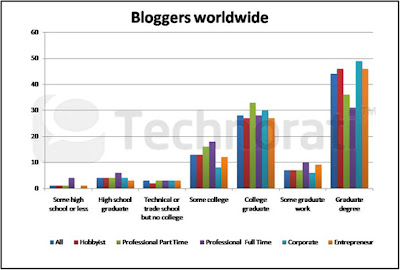We are all familiar with the definition of ‘blog’
where it can be described as a series of journals or essays written online in
chronological order through a series of weblogs, however a blogging community
is somewhat an extension of that.
In other words, a blogging community are made
of independent blogs that share similar outlook or mindsets with different groups
of people that are connected via a similar platform (Kinkeldei, 2007, p. 2).
 |
| Figure 1: An exemplary of a blogging community in Malaysia |
(Image source: http://www.blogged.my/ , 2012)
There are various ways that a blogger can
create a blog community, According to Swafford:
- It is important to be visible. No blogger would like to be a “wallpaper”. Bloggers should give and reply comments as a step to reach out to other bloggers.
- Create a linkage of posts and share them
on other networking sites such as Facebook and Twitter.
- Create a partnership with another well-known
blogger to do a combined weblog or postings as this will not only help traffic
but also recognition (2011).
Nancy White’s three models of blogging communities (2006):
The Single Blog/Blogger Centric Community:
 |
| Figure 2: Single Blog/Blogger Centric Community Model |
(Image source: http://kt.flexiblelearning.net.au , 2006)
This type is typically owned by
an individual or an organisation but they have several authors that can access
to post the weblogs. Like the image above, the readers not only get to comment
on the blog but also get to know other commentors. Therefore, the organisation
or individual have total control over the blog.
Central Connecting Topic Community:
 |
| Figure 3: Topic Centric Community Model |
(Image source: http://kt.flexiblelearning.net.au , 2006)
This type
is usually used by bloggers that share a particular interest or a common
passion and are less concern about being in the spot light. Different from the
single blogger, the community does not depend on a common platform and have
less control.
Boundaried Communities:
 | ||
| Figure 4: Boundaried Communities |
(Image source: http://kt.flexiblelearning.net.au , 2006)
This type promotes regulatory membership
requirements in order to gain access where it contains more than one tool and
forms part of the overall ecosystem.
Application
 |
| Figure 5: Taylor's Online Portal |





